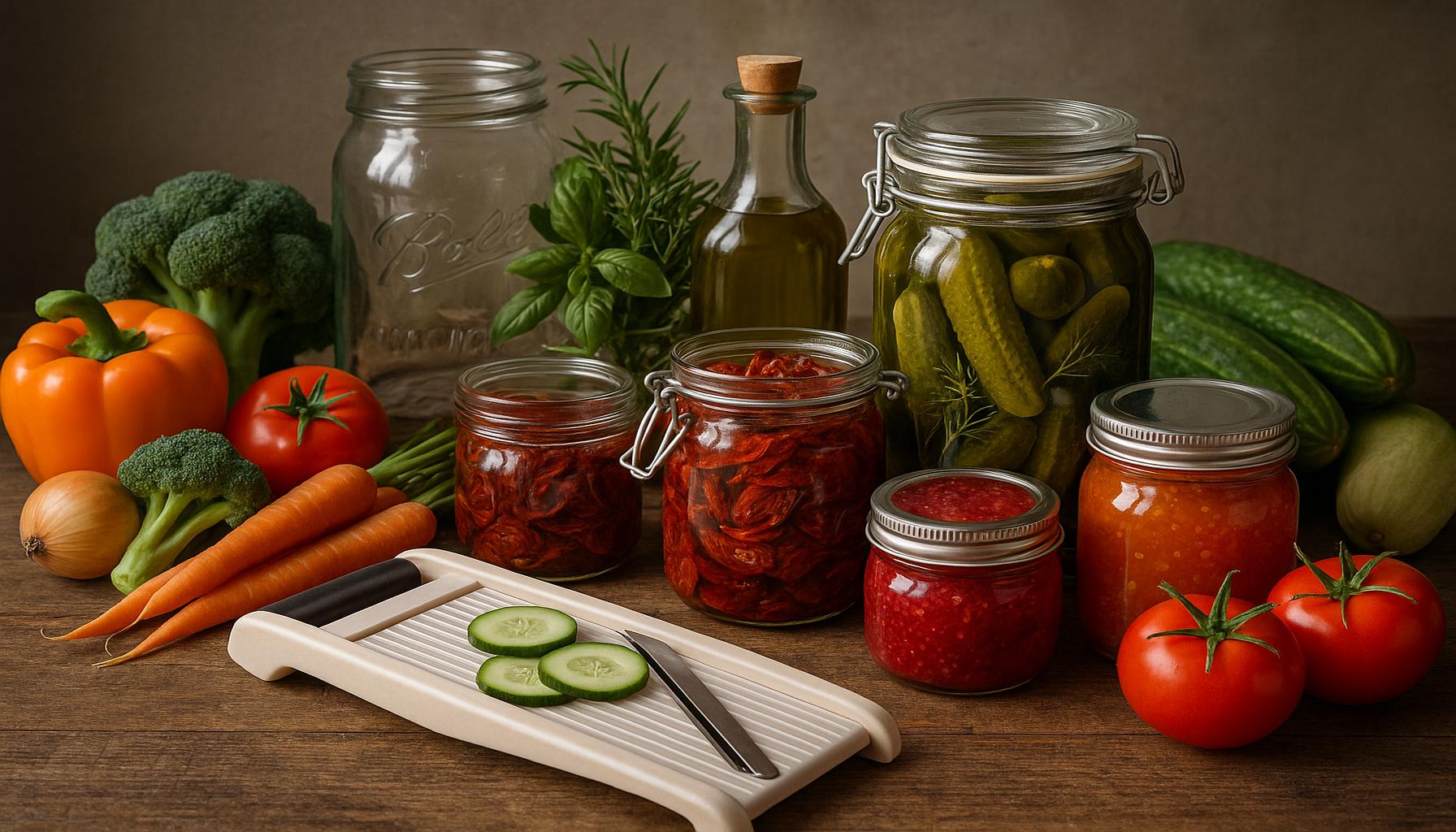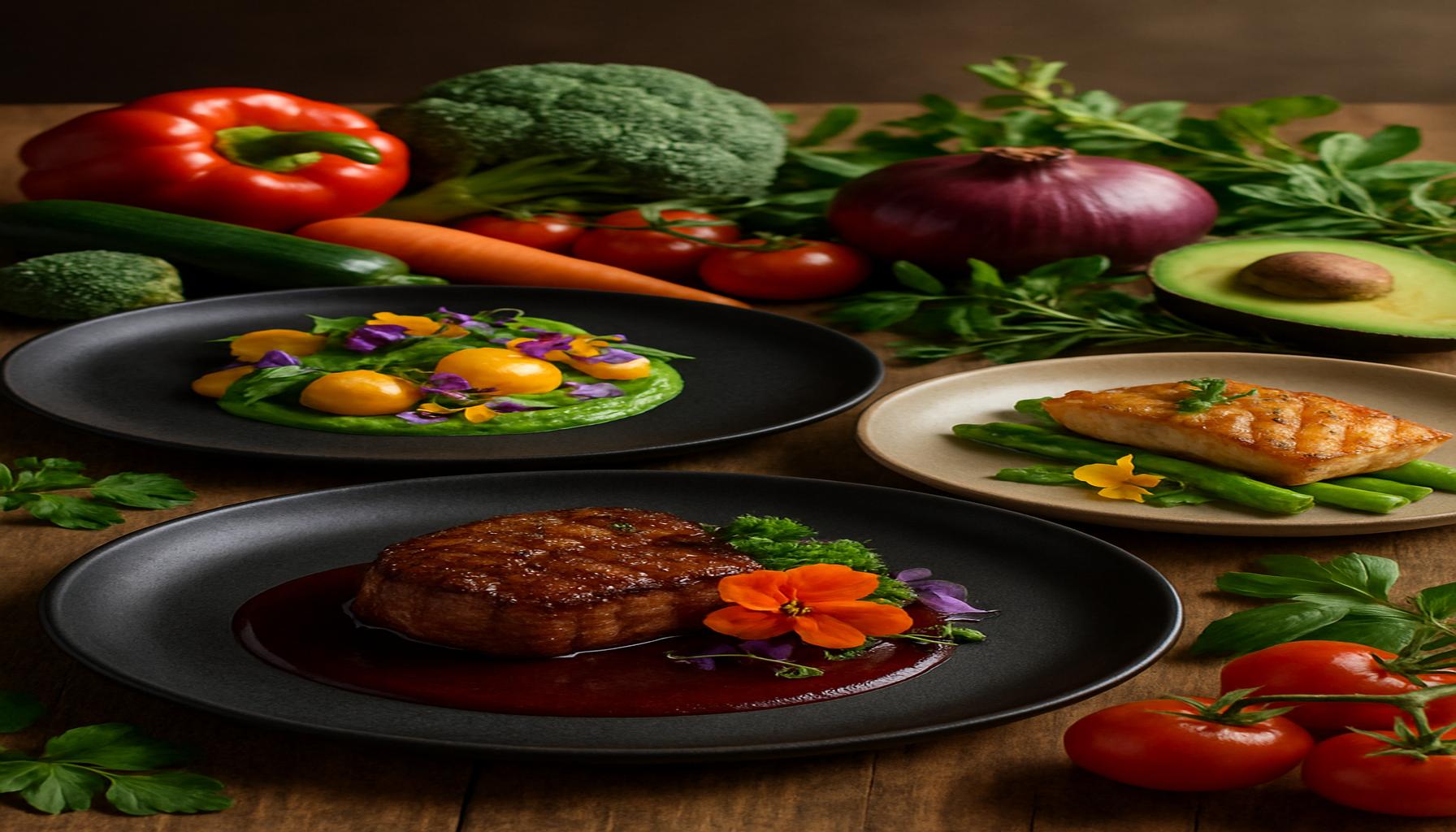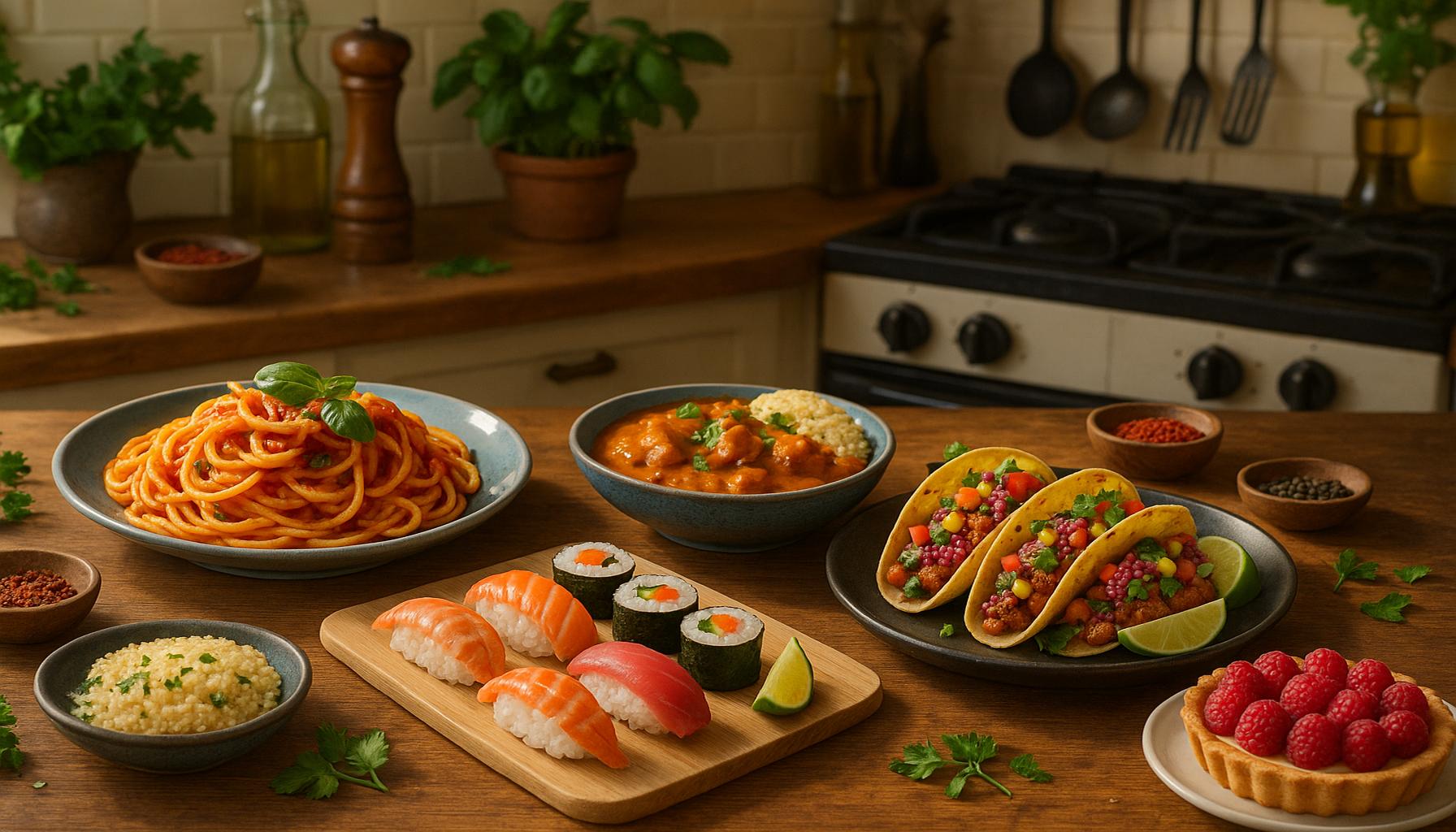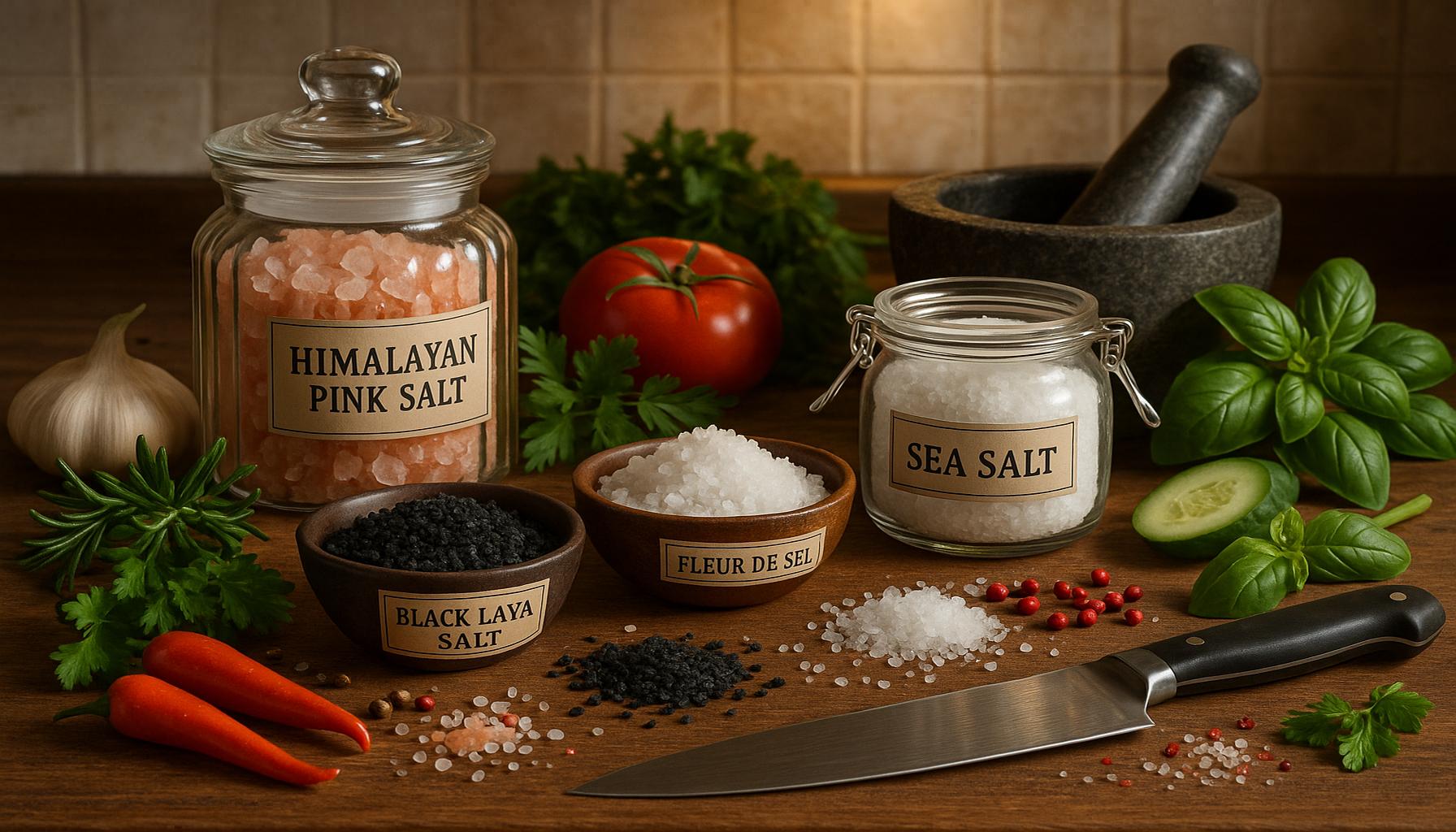The Art of Preservation: Preservation Techniques to Preserve Flavors and Create New Textures

Unlocking Culinary Creativity
Food preservation isn’t just about keeping ingredients fresh; it’s an art form that elevates flavors and transforms textures into something extraordinary. As culinary enthusiasts search for innovative ways to enhance their dishes, understanding preservation techniques becomes invaluable. These methods not only retain and extend the life of ingredients but also open up a world of culinary possibilities that can make everyday cooking an adventure.
Why Preservation Matters
Preservation techniques can significantly impact both taste and texture, setting the stage for a rich culinary experience. Here are some vital reasons why these methods are essential:
- Flavor Enhancement: Certain techniques, such as fermentation, can intensify the natural flavors of ingredients. For instance, the tanginess of homemade sauerkraut or pickles brings out new dimensions in flavors that can complement a variety of dishes, from sandwiches to salads.
- Texture Variation: Preservation can create surprising new textures that thrill the palate. For example, dehydrated fruits can become chewy snacks, while smoked meats may develop a tender, melt-in-your-mouth quality that enchants food lovers.
- Seasonal Availability: It allows chefs and home cooks to enjoy seasonal flavors all year round. By canning fresh tomatoes or freezing summer berries, you can savor the taste of the season even in the depths of winter.
Popular Preservation Techniques
There are various methods that yield delightful results in the kitchen. Understanding and experimenting with these techniques can greatly enhance your cooking. Here are some of the most popular methods:
- Canning: This method involves sealing foods in jars for long-term storage, allowing you to capture the essence of seasonal produce. Popular items for canning include jams, pickles, and canned vegetables. With precision, one can preserve the flavor of freshly harvested ingredients.
- Fermentation: Encouraging beneficial bacteria to transform ingredients not only extends shelf life but also introduces probiotics beneficial for gut health. Think of classic examples like kimchi and yogurt, where simple ingredients evolve into flavorful staples.
- Smoking: Infusing foods with rich, smoky flavors can dramatically alter the taste profile. Smoking fish, meats, or even vegetables adds depth and complexity, making it a favorite among barbecue enthusiasts and chefs alike.
- Dehydration: Removing moisture concentrates flavors and prolongs shelf life, making this technique ideal for fruits, vegetables, and herbs. Dried cherries or tomatoes, for instance, can elevate salads or pasta dishes, while herbs retain their potency and fragrance for seasoning year-round.
By mastering these preservation techniques, you can expand your culinary repertoire and create dishes that surprise and delight. Each method brings its own unique benefits and opens doors to new flavors and textures that may not have been possible otherwise. Dive into the science and artistry behind preservation, and discover how you can amplify flavors and create tantalizing experiences in your cooking. The journey of flavor and texture awaits, encouraging you to explore the depths of your culinary creativity.
DISCOVER MORE: Click here for watercolor techniques
Exploring the Techniques of Preservation
The world of food preservation offers a vast array of techniques that not only protect ingredients but also enhance their flavors and textures, making them more enjoyable. By understanding and applying these methods, you gain access to a treasure trove of culinary creativity. Many techniques have deep roots in history, while others are evolving with modern gastronomy. Let’s delve deeper into the art of preservation and uncover some methods that can transform the way you cook and experience food.
Culinary Mastery Through Canning
Canning is one of the most recognized and effective preservation techniques. This method involves heating foods in jars to destroy bacteria and seal them for long-term storage. Canned goods not only retain the essence of seasonal produce but also allow for controlled flavor profiles. When done correctly, you can preserve the flavors of freshly harvested fruits and vegetables, capturing the vitality of summer’s bounty to savor year-round. Popular items for canning include:
- Jams and Jellies: These sweet spreads can transport you to the lush orchards of summer, with each jar opening a taste of nature’s sweetness.
- Pickled Vegetables: From crisp cucumbers to tangy red onions, pickling adds a delightful zing and crunch, enhancing their usefulness in a variety of dishes.
- Canned Tomatoes: The essential base for sauces, soups, and stews, canned tomatoes allow you to enjoy the flavor of ripe tomato season long after the last harvest.
Revitalizing with Fermentation
Fermentation is perhaps the most fascinating of all the preservation techniques, as it employs natural processes and microorganisms to enhance flavors. When foods ferment, they develop complex profiles and beneficial probiotics. This age-old method can elevate ordinary ingredients into extraordinary culinary staples. Consider some remarkable fermented delights:
- Kimchi: A staple in Korean cuisine, kimchi can range from spicy to mildly tangy, and the variety of vegetables used provides endless opportunities for creation.
- Yogurt: This creamy, tangy product not only serves as a fantastic snack or breakfast but also offers a wealth of health benefits, including improved digestion.
- Sourdough Bread: The natural leavening process gives rise to a tangy flavor and a chewy texture, which can elevate your baking game to artisan levels.
Embracing the art of fermentation invites a cultural journey through the ages, offering a unique taste of history in every bite. By incorporating these vibrant fermented ingredients into your cooking, you can enhance both nutrition and flavor in your dishes.
Flavorful Depth through Smoking
Smoking is another preservation method that has captured the hearts of culinary enthusiasts. This technique involves exposing foods to smoke, which infuses them with a rich, deep flavor difficult to replicate through other means. Whether you’re smoking meats, fish, or vegetables, the results can be nothing short of transformative. Popular smoked items include:
- Smoked Salmon: The delicate process infuses the fish with a savory depth that pairs beautifully with bagels and cream cheese.
- Brisket: Slow-smoked brisket can become a show-stopping dish, showcasing layers of flavor and tenderness that melt in your mouth.
- Smoked Vegetables: From peppers to eggplants, smoking vegetables adds a layer of complexity that can brighten any dish.
Experimenting with these preservation techniques is an invitation to play in the kitchen and elevate your dishes in ways you may have never imagined. Each method offers unique benefits and opens doors to new taste experiences, rewriting the rules of flavor and texture in your culinary adventures.
The Art of Preservation: Exploring Techniques
When we delve into the rich world of culinary preservation, several innovative methods stand out for their ability to enhance flavors and create new textures, transforming ordinary ingredients into extraordinary experiences. Below are key techniques that are revolutionizing the way we think about food preservation.
| Preservation Technique | Advantages |
|---|---|
| Fermentation | Adds complex flavors through natural bacteria, improving digestibility and preserving nutrients. |
| Dehydration | Intensifies flavors while extending shelf life; perfect for fruits, herbs, and meats. |
| Canning | Creates a vacuum seal that preserves flavors and textures, maintaining food quality for years. |
| Pickling | Enhances flavor while providing a tangy zest to dishes, and extends the life of vegetables significantly. |
Exploring these preservation techniques not only enhances our culinary repertoire but also deepens our appreciation for the ingredients we source. Whether you are a gourmet chef or a home cook, engaging in these methods can inspire creativity and innovation within the kitchen, while also ensuring that delicious flavors are savored long after harvest. As you delve into the art of preservation, consider how each technique can contribute to your unique culinary expressions.
DIVE DEEPER: Click here to explore eco-friendly crafting ideas
Innovative Approaches in Preservation Techniques
As culinary science continues to advance, innovative preservation techniques are emerging that not only prolong shelf life but also enhance flavors and textures in novel ways. These methods marry tradition with modernity, allowing chefs and home cooks alike to explore new dimensions of taste. Let’s dive into some of these cutting-edge techniques that are redefining the art of preservation.
Dehydration: Concentrated Flavors
Dehydration is a technique that involves removing moisture from foods, which concentrates their flavors and preserves them for long-term storage. This method can dramatically alter the texture of ingredients, turning fresh produce into chewy snacks or powdered spices that can be easily mixed into dishes. Dehydrated items have a long shelf life and provide versatility in cooking. Popular dehydrated foods include:
- Dried Fruits: From apricots to apples, dried fruits retain their sweetness and offer a convenient snack or ingredient for trail mixes and baked goods.
- Vegetable Chips: Dehydrated vegetables can be turned into crispy chips, providing a flavorful snack option that retains nutrients without added oils and preservatives.
- Herb Powders: Drying and grinding herbs allows you to create flavorful powders that can easily enhance sauces, dressings, and marinades.
Embracing dehydration not only allows for creative culinary endeavors but also encourages an eco-friendly approach, helping reduce food waste by transforming surplus produce into shelf-stable delights.
Freezing: Locking in Freshness
Freezing has become a cornerstone of modern preservation, significantly extending the lifespan of foods while maintaining their flavors and textures. Techniques such as flash freezing—where food is frozen rapidly at extremely low temperatures—can prevent the formation of large ice crystals that damage cell walls in fruits and vegetables. This results in perfectly preserved produce that retains its integrity. Consider the following frozen specialties:
- Frozen Herbs in Oil: By pureeing herbs with olive oil and freezing them in ice cube trays, you create convenient flavor boosters for soups and sautés.
- Smoothie Packs: Pre-portioning fruits and greens for smoothies makes for easy, nutritious breakfasts that are quick to prepare and packed with flavor.
- Frozen Soups and Stews: Cooking in bulk and freezing portion-sized containers of your favorite recipes ensures you have hearty meals ready in minutes without sacrificing taste.
Freezing maintains the nutrients in food, making it a reliable method for healthy meal preparation.
Vacuum Sealing: Freshness Redefined
Vacuum sealing is an innovative preservation method that removes air from packaging, significantly slowing down oxidation and bacterial growth. This technique can be used in conjunction with other methods like freezing to enhance food longevity and quality. Vacuum-sealed foods can also intensify flavors, as they allow for marinade absorption and moisture retention. Some applications of vacuum sealing include:
- Marinated Proteins: By vacuum sealing meats with marinades, flavors penetrate deeply, creating juicy, well-seasoned dishes.
- Sous Vide Cooking: This technique involves cooking vacuum-sealed foods in a temperature-controlled water bath, resulting in perfectly cooked textures and preserved flavors.
- Bulk Storage: Buying food in bulk and vacuum sealing it helps save money while preventing freezer burn and spoilage.
Whether you are a home cook or a professional chef, vacuum sealing can elevate your kitchen prowess, allowing for consistent results and preserved ingredients that are ready to shine.
These innovative preservation techniques are not only practical; they also offer a way to redefine taste experiences. By exploring advancements in preservation, you can enhance your culinary repertoire and embrace the art of flavor and texture longevity.
DIVE DEEPER: Click here to uncover the secrets of storytelling
Conclusion: Embracing the Craft of Flavor Preservation
The exploration of preservation techniques has illuminated a world where culinary creativity thrives alongside functionality. From dehydration that intensifies the deep flavors of fruits and vegetables, to freezing methods that lock in freshness, and the ingenuity of vacuum sealing that preserves textures while enhancing taste, each technique offers unique benefits that cater to both chefs and home cooks. These practices go beyond mere shelf life extension; they invite us to rethink how we interact with food and its potential.
In embracing these preservation methods, we discover exciting opportunities to reduce waste, maximize flavor, and craft meals that satisfy not only our appetites but also our environmental consciousness. The versatility and creativity afforded by these techniques empower us to explore new culinary dimensions—be it transforming seasonal produce into year-round treasures or concocting innovative dishes that tell a story of sustainability and taste.
As you dive into the art of preservation, consider the possibilities that await in your kitchen. Whether you’re repurposing surplus ingredients or experimenting with flavor combinations, the age-old practice of preservation can lead to delicious discoveries and appealing new textures. Let curiosity guide you as you unlock the potential of your pantry and embrace the journey of flavor at every turn, reminding us that the art of preservation is as much about the experience as it is about the food itself.


